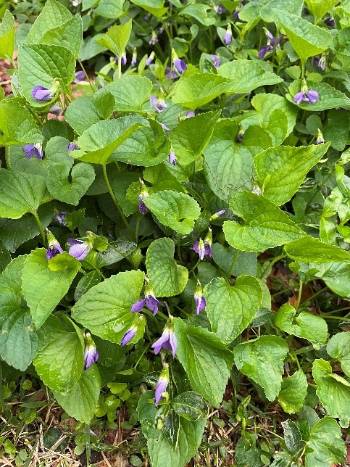Wild Violets

These plants are a perennial member of the violet family. There are several types of wild violets, but all are characterized by heart-shaped leaves and purple to bluish flowers in the spring. This plant does make a great naturalizer under trees or in areas where growing grass or other ground covers is not an option. They form a decent ground cover by spreading via rhizomes or underground stems. The flowers are edible and can be used in salads or to flavor vinegar and syrups. The leaves are also edible and can be eaten in salads, soups, or as cooked greens. When eating any plant, ensure you are confident in your identification, for some wild violets are invasive weeds that can quickly take over flower beds and spread to the lawn through their extensive root system. Removal by hand is not effective unless you can dig down and remove the entire root system since the plants will resprout from any rhizomes left over. In the yard, improving turf density can help keep future infestations from getting established. Chemical applications involving the active ingredients triclopyr, 2,4-D, or similar products will most likely be required to remove the violets. Repeat applications throughout the growing season and potentially over several years may be necessary to remove this weed thoroughly.

Have questions? Contact our office where our Horticulture Extension Agent will assist you with questions.
Phone: (316) 321-9660
Email: callae@ksu.edu